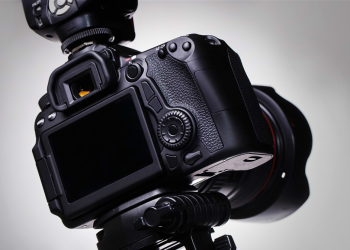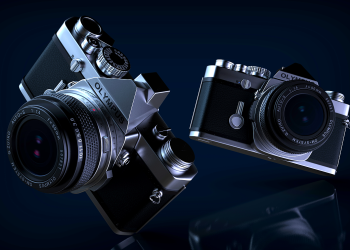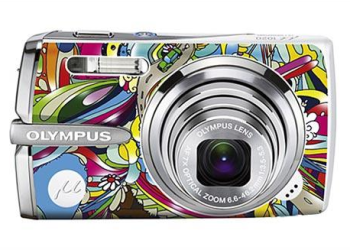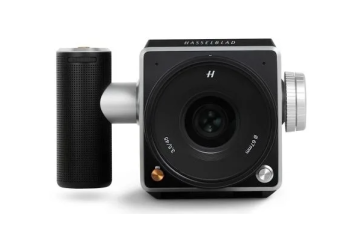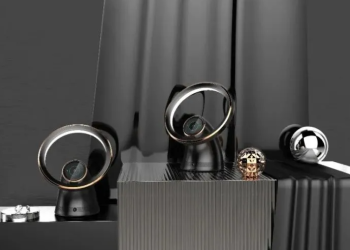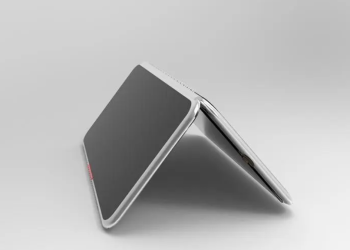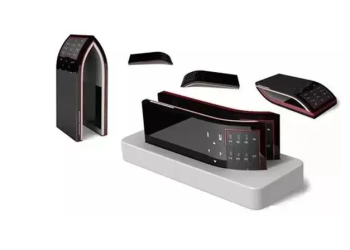Introduction
In recent years, mirrorless cameras have revolutionized the world of photography with their compact design, advanced features, and impressive performance. In this article, we’ll delve into the features, pros, and cons of mirrorless cameras, offering insights into why they have become increasingly popular among photographers of all levels.
What are Mirrorless Cameras?
Definition: Mirrorless cameras, as the name suggests, are digital cameras that lack the traditional mirror and optical viewfinder found in DSLRs. Instead, they utilize electronic viewfinders (EVFs) or LCD screens for composing images.
Evolution from DSLRs: Mirrorless cameras have evolved from DSLRs, offering a more streamlined design and innovative features. By eliminating the bulky mirror mechanism, mirrorless cameras achieve a compact and lightweight form factor without compromising on image quality.
Key Features: Key features of mirrorless cameras include interchangeable lenses, electronic viewfinders, silent shooting modes, advanced autofocus systems, and 4K video recording capabilities.
Advantages of Mirrorless Cameras
Compact and Lightweight Design: One of the most significant advantages of mirrorless cameras is their compact and lightweight design. This makes them ideal for travel, street photography, and other situations where portability is paramount.
Electronic Viewfinder (EVF): Mirrorless cameras feature electronic viewfinders (EVFs) that provide a real-time preview of the final image. This allows photographers to see exposure adjustments, white balance settings, and depth of field effects before capturing the shot.
Silent Shooting: Mirrorless cameras offer silent shooting modes, which are particularly useful in quiet environments or when photographing sensitive subjects such as wildlife or weddings.
Continuous Autofocus: Mirrorless cameras are equipped with advanced autofocus systems that excel in tracking moving subjects. This makes them ideal for sports, wildlife, and other fast-paced photography genres.
Video Capabilities: Many mirrorless cameras offer impressive video recording capabilities, including 4K resolution, high frame rates, and advanced video autofocus tracking.
Disadvantages of Mirrorless Cameras
Battery Life: One common disadvantage of mirrorless cameras is their shorter battery life compared to DSLRs. The electronic viewfinder and continuous autofocus systems can drain the battery quickly, requiring photographers to carry spare batteries for extended shooting sessions.
Limited Lens Selection: While the lens selection for mirrorless cameras has expanded in recent years, it may still be more limited compared to DSLRs. This can be a drawback for photographers who rely on specialized lenses for their work.
Electronic Viewfinder vs. Optical Viewfinder: Some photographers prefer the optical viewfinder found in DSLRs, which offers a direct view through the lens. Electronic viewfinders, while providing useful features like exposure preview, may not replicate the same experience for some users.
Ergonomics and Handling: Mirrorless cameras, especially smaller models, may have less ergonomic grips and controls compared to DSLRs. This can affect the comfort and handling of the camera, particularly during extended shooting sessions.
Price: Mirrorless cameras, particularly high-end models with advanced features, may be more expensive than entry-level DSLRs. However, the gap in pricing has narrowed as mirrorless technology has become more mainstream.
Key Features to Consider
Sensor Size: Mirrorless cameras are available with different sensor sizes, including full-frame, APS-C, and Micro Four Thirds. Consider the sensor size based on your photography needs and budget.
Megapixels: Higher megapixel counts may result in larger image files and increased detail in photos. However, megapixels are not the only factor determining image quality, so consider other features as well.
Autofocus System: Look for mirrorless cameras with advanced autofocus systems that offer fast and accurate focusing, especially if you shoot subjects that require quick action or tracking.
In-body Image Stabilization: Some mirrorless cameras feature in-body image stabilization, which helps reduce camera shake and blur in handheld shots. This feature can be particularly useful in low-light conditions or when using telephoto lenses.
Connectivity Options: Consider the connectivity options offered by mirrorless cameras, such as Wi-Fi, Bluetooth, and NFC, for seamless sharing and remote control capabilities.
Popular Mirrorless Camera Brands
Sony: Sony has been at the forefront of mirrorless camera technology with its Alpha series, offering models like the Sony Alpha A7 III and A7R IV with full-frame sensors and advanced features.
Canon: Canon has introduced the EOS R series of mirrorless cameras, including the Canon EOS R5 and R6, which feature impressive image quality, autofocus performance, and video capabilities.
Nikon: Nikon has entered the mirrorless market with its Z series cameras, such as the Nikon Z6 and Z7, offering a blend of compact design, high-resolution sensors, and advanced features.
Fujifilm: Fujifilm’s X series of mirrorless cameras, including the Fujifilm X-T4 and X-Pro3, are known for their retro design, film simulations, and excellent image quality.
Panasonic: Panasonic’s Lumix series of mirrorless cameras, such as the Panasonic Lumix GH5 and S1H, are popular among videographers for their 4K video recording capabilities and advanced video features.
Comparison with DSLR Cameras
Size and Weight: Mirrorless cameras are generally smaller and lighter than DSLRs, making them more portable and convenient for travel and everyday use.
Autofocus Performance: Mirrorless cameras often feature advanced autofocus systems with phase-detection and contrast-detection points, resulting in faster and more accurate focusing compared to DSLRs.
Image Quality: Both mirrorless cameras and DSLRs can produce high-quality images, with factors like sensor size, megapixels, and lens quality influencing overall image quality.
Lens Compatibility: While DSLRs have a larger selection of native lenses available, mirrorless cameras offer compatibility with a wide range of lenses through adapters, allowing photographers to use legacy glass and lenses from other brands.
Best Practices for Using Mirrorless Cameras
Understand the Features: Take the time to familiarize yourself with the features and capabilities of your mirrorless camera, including autofocus modes, exposure settings, and customization options.
Invest in Quality Lenses: Invest in quality lenses that suit your photography style and preferences, whether you shoot landscapes, portraits, or sports. Consider factors like focal length, aperture, and optical quality when choosing lenses.
Practice Regularly: Practice using your mirrorless camera regularly to become familiar with its operation and to hone your photography skills. Experiment with different settings, compositions, and lighting conditions to expand your creative repertoire.
Stay Updated with Firmware Updates: Keep your mirrorless camera up to date with the latest firmware updates released by the manufacturer. These updates may include improvements to autofocus performance, image quality, and overall functionality.
Case Studies
Real-life Examples of Photographers Using Mirrorless Cameras:
- Showcase real-life examples of photographers who have embraced mirrorless cameras for their work, highlighting the versatility, performance, and creative possibilities offered by these cameras.
Future Trends in Mirrorless Technology
Advances in Sensor Technology: Expect continued advances in sensor technology, including higher resolution sensors, improved low-light performance, and enhanced dynamic range.
Enhanced Autofocus Systems: Anticipate further improvements in autofocus systems, with faster and more accurate tracking of moving subjects, improved eye detection, and enhanced low-light performance.
Integration of Artificial Intelligence: Look for the integration of artificial intelligence (AI) into mirrorless cameras, enabling features like intelligent scene recognition, automatic subject tracking, and advanced image processing algorithms.
Conclusion
In conclusion, mirrorless cameras offer a compelling alternative to traditional DSLRs, combining compact design, advanced features, and excellent image quality. While they may have some drawbacks compared to DSLRs, such as battery life and lens selection, the benefits far outweigh the limitations for many photographers. Whether you’re a beginner looking to upgrade from a smartphone or a professional seeking a lightweight and versatile camera system, consider exploring the world of mirrorless photography for your next creative endeavor.

FAQs After The Conclusion
- Are mirrorless cameras better than DSLRs?
- The answer depends on your specific needs and preferences. Mirrorless cameras offer advantages like compact size, advanced features, and excellent image quality, but DSLRs may have advantages like longer battery life and a larger selection of native lenses.
- Do mirrorless cameras have viewfinders?
- Yes, many mirrorless cameras come equipped with electronic viewfinders (EVFs) or offer the option to attach an external electronic viewfinder.
- Can I use DSLR lenses on a mirrorless camera?
- With the use of lens adapters, many DSLR lenses can be mounted on mirrorless cameras. However, some functionality like autofocus may be limited depending on the adapter and lens combination.
- Do mirrorless cameras have image stabilization?
- Many mirrorless cameras feature in-body image stabilization (IBIS), which helps reduce camera shake and blur in handheld shots. Some models also offer lens-based stabilization in addition to IBIS.
- Are mirrorless cameras good for video recording?
- Yes, many mirrorless cameras offer impressive video recording capabilities, including 4K resolution, high frame rates, and advanced video autofocus tracking.
- Are mirrorless cameras more expensive than DSLRs?
- Mirrorless cameras are available at a range of price points, with entry-level models being comparable in cost to DSLRs. However, high-end mirrorless cameras may command a premium due to advanced features and technology.
- Do mirrorless cameras have better autofocus than DSLRs?
- Mirrorless cameras often feature advanced autofocus systems with phase-detection and contrast-detection points, resulting in faster and more accurate focusing compared to DSLRs in many cases.
- Can mirrorless cameras produce professional-quality images?
- Yes, mirrorless cameras are capable of producing professional-quality images, with factors like sensor size, megapixels, lens quality, and photographer skill influencing overall image quality.




